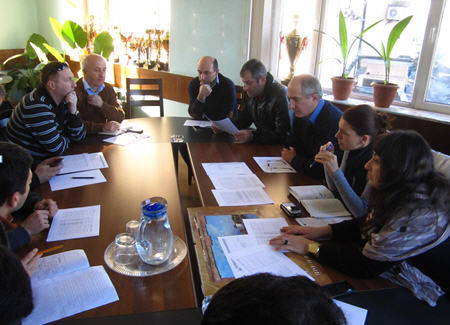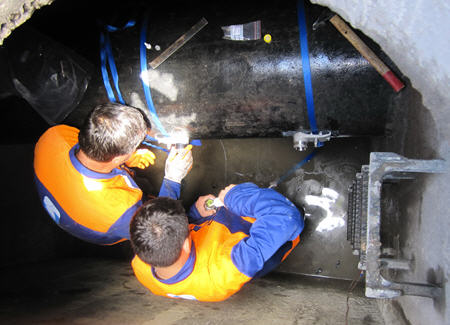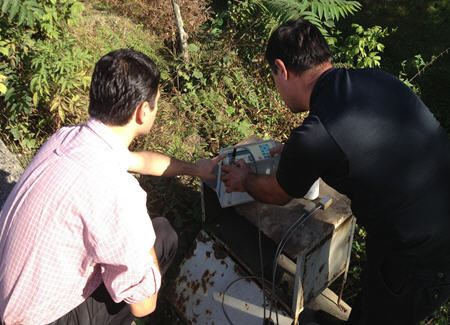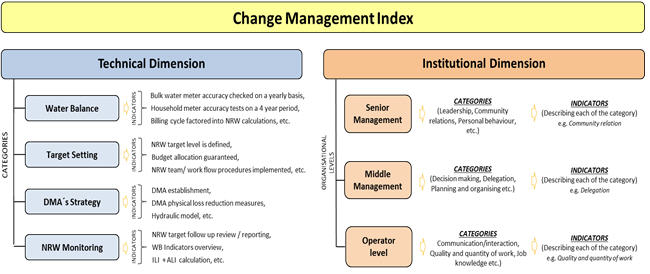NRW Change Management Index: An Innovative Approach For Non-Revenue Water Management
By Monika Konatar and Dr. Thomas Schiller
In recent years, the reduction of water losses has become a burning issue within the water industry and utilities, either for financial or ecological reasons, are under increasing pressure to enhance resource efficiency. However, practitioners know that assessing and monitoring the performance of water loss reduction programs is a real challenge, and what at first may sound like a simple task, in practice turns out to be a rather complex undertaking.
Until now, the performance-improvement and operational change regarding water loss reduction programs have been measured by reference to principal technical components such as Authorized Billed Consumption, Unbilled Authorized Consumption, Apparent Losses or Real Losses, which are the main components of the well-known international approach for water balance calculations developed by IWA Task Force. While such components are certainly important criterions with regard to overall performance improvement, the outcome of many water loss reduction programs still remains questionable and well behind expectations. Only lately has it been recognized that the institutional environment and culture of a utility is a key factor for successful NRW management and the sustainability of water supply and sanitation services.
Recent field work by MACS Energy & Water – an international consulting company based in Germany specializing in water as well as energy efficiency and renewable energy – has proven that emphasizing effective infrastructure optimization and institutional development can ensure lasting effectiveness of improvement programs aimed at operational performance. This is achieved through high-impact change management plans in accordance with strong water loss management strategies.
The Concept Of The NRW Change Management Index
The NRW Change Management Index essentially is a goal-oriented management application that helps to plan and manage performance assessments and furthermore allows the close progress-monitoring of non-revenue water (NRW) reduction programs. The index merges the technical (including commercial) and the institutional dimension by consolidating relevant technical performance indicators with important employee performance indicators at all levels of the organization. The employee performance is measured by analyzing staff attitudes, behavior and relevant skills.
The NRW Change Management Index has been developed in the context of a Non-Revenue Water Programme implemented as part of a Municipal Infrastructure Rehabilitation Program co-financed by the German government through KfW Development Bank. In this framework MACS Energy & Water was contracted to assist the municipal water utility, Batumi Tskali (Batumi Water) in strengthening their institutional and personnel capacities, while still focusing on improving the technical operation of the water supply network and other facilities.

NRW Steering Committee meeting in Batumi Tskali, Georgia
One of the main challenges the consultants were facing at the outset of their work was a lack of problem-understanding by utility staff and even outright rejection of training measures. Despite the realization of radical changes in the physical infrastructure such as the construction of new facilities and supply networks as well as the establishment of DMAs, key stakeholders and operational staff in the utility did not show the readiness or ability to successfully adapt to these changes on a level of attitude and behavior. The high NRW (>90 percent) was perceived as a “disease” that could only be remedied by the new network that was being built in the framework of the donor funded rehabilitation program. Once the construction of the new network is finalized, the problem would be resolved. Therefore, a critical risk existed that the sustainable management of the supply network would not be achieved.
In order to address the problem, MACS applied a holistic approach, combining hydraulic engineering with complementary change management principles putting a focus on strengthening institutional issues such as staff attitude, behavior, and performance. This includes increasing competence and productivity as well as improving the employees’ performance, understanding towards NRW reduction and communication at all organizational levels. In this way, utility management and operational staff were enabled to understand and accept the ongoing change.

The Batumi Tskali NRW team installing a flow meter.
The experience proved that the integration of an institutional dimension and change management can provide a crucial boost to performance improvement programs, because the institutional perspective open up the possibility to identify more precisely why (or why not) a program accomplishes its goal and to which degree future results are likely to be achieved. By consolidating the technical and institutional dimensions, the NRW Change Management Index gives a holistic picture of a utility’s NRW management approach, overcoming existing shortcomings of the one-dimensional technical NRW audits. Thus, the index can guide water utilities with critical information to enhance the effectiveness of resources allocation.

Flow measurement by the Batumi Tskali NRW team.
Structural Components Of The NRW Change Management Index
The main structural components of the NRW Change Management Index are rooted in the technical and the institutional dimensions of utility operation. To monitor performance-progress during the implementation of an NRW reduction strategy, a number of indicators have been defined and grouped in different categories. Each set of indicators focuses on a specific topic and shows what is being achieved over a certain period of time, highlighting aspects that may require further improvement.
Indicators from the technical dimension are grouped into four categories: water balance, target setting, DMA’s approach, and NRW monitoring. These four categories were determined based on the IWA´s component-classification for non-revenue water (NRW), current literature on the topic, and relevant MACS experience. The technical indicator values reflect the degree of implementation of procedures that together set the path for sustainably reducing non-revenue water. These values are based on operational performance figures derived from the utility’s records.
Indicators from the institutional dimension capture attitudes, behavior and skills – all crucial determinants that carry success at each organizational level (top management, middle management, and operator level). These hierarchical levels are chosen based on current literature regarding organizational structures of companies and types of management levels. The values are derived from semi-structured interviews with a defined sample of utility employees from different hierarchical levels and combined with observations of everyday work.
By carrying out such comprehensive observations, staff’s attitudes to change, formal and informal relationships can be monitored.

Figure 1. The main structural components of the Change Management Index
Based on the NRW Change Management structure, appropriate scales are defined for each of the indicators while weights are assigned to each category and indicator to produce a reliable analysis that describes performance development based on a single consolidated value (measured from 0 to 100 percent). The higher the value of the Index is, the more likely an NRW program will lead to the desired results justifying the investment. On the other hand, lower values of the Index should prompt decision makers to exercise caution regarding the achievable results of a program. Indicators can be evaluated over a selected period of time (and at defined intervals within this period) and thus provide the possibility to follow up and measure the effectiveness of a water utility’s NRW reduction-strategy.
As such, the NRW Change Management Index is a useful tool for utilities, financing institutions and consultants during the implementation of operational improvement program. Not only does it allow predicting and monitoring the effectiveness of such programs, it could also be applied to define conditions of consultancy contracts for specific projects.
About the authors
Monika Konatar is a Human Resource Development Expert for MACS Energy & Water GmbH. She can be reached at +49 (69) 943188-0 or monika.konatar@macsonline.de
Dr. Thomas Schiller is a Managing Director for MACS Energy & Water GmbH. He can be reached at +49 (69) 943188-0 or thomas.schiller@macsonline.de
References
Farley, M. (2008) The Manager’s Non Revenue Water Handbook – A Guide to Understanding Water Losses. Ranhill Utilities Berhad and USAID. Retrieved from: http://www.seawun.org/uploads/reports/NRW%20Manager%20Handbook.pdf
Konatar, M. (2013) Supporting non-revenue water reduction with a Change Management Index. Water Utility Management International. 8 (2). ISSN Online: 1747-776x.
Konatar, M. and Hitzel, M. (2011) Management of change – Coping with non-revenue water in a Georgian water utility. Water Utility Management International. 6 (4). ISSN Online: 1747-776X.
Sharma, S. (2008) Performance indicators of water losses in distribution system. Retrieved from: http://www.switchurbanwater.eu/outputs/pdfs/GEN_PRS_PI_of_Water_Losses_AC_Apr08.pdf
